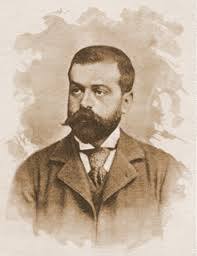 Do you know about the Tree Adansonia digitata? or Baobab tree which seemed strange and unique that grows in lowland Africa and Australia. Baobab is also called inverted trees because of lack of leaves, branches spread Baobab look like roots sticking up into the air, as if it had been planted upside down.
Do you know about the Tree Adansonia digitata? or Baobab tree which seemed strange and unique that grows in lowland Africa and Australia. Baobab is also called inverted trees because of lack of leaves, branches spread Baobab look like roots sticking up into the air, as if it had been planted upside down.
Legend has it that the god Thora did not like the Baobab growing in his garden, so he threw it out of the wall of heaven to the earth below, and although the tree landed upside down it continues to grow.
Another story that when the Baobab was planted by God, but the tree continues to run, so the Lord pull the tree up and put it upside down to stop it moving.
Baobab is recognized by the African people because all the parts can be used in some capacity. In addition to being an important source of wood, hollow rods by those often used for shelter, grain storage or as a water reservoir.
Baobab can grow to a height of 5 to 30 meters and has a trunk diameter of 7 to 11 meters. The Baobab in Limpopo Province, South Africa, often considered the largest example of baobab trees that are still alive.
 Until a couple of times the tree has a circumference of 47 meters - 15.9 meters in diameter estimated. Recently the tree split into two parts and it is possible that the stoutest tree now is Sunland Baobab, also in South Africa with a diameter of 10.64 m and the approximate circumference of 33.4 meters. Baobabs also famous for the age thousands of years.
Until a couple of times the tree has a circumference of 47 meters - 15.9 meters in diameter estimated. Recently the tree split into two parts and it is possible that the stoutest tree now is Sunland Baobab, also in South Africa with a diameter of 10.64 m and the approximate circumference of 33.4 meters. Baobabs also famous for the age thousands of years.
Concave rod also serves as a place of burial. Some of the most important product derived from the bark of the tree, which contains the fiber used to make fishing nets, ropes, bags and clothing.
 Vespa history began more than a century ago, precisely 1884. Piaggio company was founded in Genoa, Italy in 1884 by Rinaldo Piaggio. Business Rinaldo began ship equipment. But at the end of the century, Piaggio was also producing rail train, Wagon Train, Truck body, engine and train. In World War I, the company manufactures and Naval Aircraft. In 1917 Piaggio bought a new plant in Pisa, and four years later Rinaldo took over a small plant in Pontedera in the Tuscany region of Italy.
The factory in Pontedera which became centers of production aircraft and their components (propeller, engine and aircraft) During World War II, the Pontedera factory making aircraft engines P108 for two passengers and a bomber version.
Vespa history began more than a century ago, precisely 1884. Piaggio company was founded in Genoa, Italy in 1884 by Rinaldo Piaggio. Business Rinaldo began ship equipment. But at the end of the century, Piaggio was also producing rail train, Wagon Train, Truck body, engine and train. In World War I, the company manufactures and Naval Aircraft. In 1917 Piaggio bought a new plant in Pisa, and four years later Rinaldo took over a small plant in Pontedera in the Tuscany region of Italy.
The factory in Pontedera which became centers of production aircraft and their components (propeller, engine and aircraft) During World War II, the Pontedera factory making aircraft engines P108 for two passengers and a bomber version.
At the end of World War II, Piaggio factory bombed by allied aircraft. After the war, Enrico Piaggio Piaggio took over from his father (Rinaldo Piaggio). At that time the Italian economy is suffering, Enrico decided to design a cheap means of transportation.Enrico company decided to focus attention on issues that people need personal Mobility Italia. Then join the Corradino D'Ascanio, talented aviation engineers who design, conceptualize and Modern His first Piaggio fly helicopters.
 D'Ascanio made the design simple, economical, comfortable and elegant. D'Ascanio dreamed of a revolutionary new vehicle. By taking a picture of the aircraft technology, he imagined a vehicle built with a "monocoque" or uni body steel chassis.
D'Ascanio made the design simple, economical, comfortable and elegant. D'Ascanio dreamed of a revolutionary new vehicle. By taking a picture of the aircraft technology, he imagined a vehicle built with a "monocoque" or uni body steel chassis.
Tyres front forks like landing a plane where it is easy for replacement tires. The result is a design that is inspired from the aircraft to date different from the other vehicle.
Then in 1945, the construction of an alternative is found. Originally was a concept motorcycle iron framed with rounded curves like a tunnel. Surprisingly, it turns staternya parts designed using bomb components and wheels taken from aircraft wheels.
In order to optimize the shape and the security of its users, the manufacturer at that time was regarded as an attempt to'' pavement'' design board feet on the front cover. The project is directly led by Corradino d'Ascanio. Therefore, patents soon be their pocket.
 As a result, there appeared first MP5 series motor products. These vehicles are technologically simple, but has a very interesting shape, like an animal stinger (bees / wasps) because of the shape skeleton.
As a result, there appeared first MP5 series motor products. These vehicles are technologically simple, but has a very interesting shape, like an animal stinger (bees / wasps) because of the shape skeleton.
However, because of the security cover like a surfboard, a number of workers at the Piaggio factory would even say as a motor Paperino. Please remember, Paperino is cynical satire to figure Donald Duck (duck). So, d'Ascanio was reasonable to fix the rotary model.
D'ascanio only takes a few days to re-conceptualize the shape and design of the vehicle was named MP6 prototype. When Enrico Piaggio saw protototip MP6, he accidentally called out "Sambra Una Vespa" (looks like a wasp). Finally, from the call by accident, it was decided the vehicle is called 'Vespa' (wasps in Indonesian).In April 1946, this MP6 prototype began mass-produced in the Piaggio factory in Pontedera, Italy. At the end of 1949, 35,000 units have been in production and in 10 years has been producing 1 million units and in mid-1950. During the 1960's and 1970's Vespa became the symbol of revolutionary idea at the time.
Subsequent developments, this product apparently hit by the market of France, Britain, Belgium, Spain, Brazil, and India - in addition to the domestic market of these products sell like hotcakes. In addition, India also produces the same type and shape by taking the machine Bajaj.
Your options are Bajaj and Bajaj Super Deluxe. A number of parties then filed a joint application to create a Vespa. Then in 1950 comes the 125 cc Vespa made in Germany.
At that time, many other countries are trying to make similar products, but it turns out they were not at all able to compete with Piaggio. Among the competitors is Lambretta, Heinkel, Zundapp and NSU. For the people of Indonesia, Lambretta products and Zundapp, was popular in the 1960's.
Inquired had inquired, bigotry against Vespa apparently arising from the features of the basic form of this motor is always maintained at each subsequent product. Even when they do'' revolution'' spelled out in the form of new products, the Vespa 150 GS, distinctiveness voluptuous ass still feels attached. Product 150 GS - at that time known as Vespamore and almost always appear in every movie of the 1960s - indeed steering and headlights start to be made together. But, on the whole much less shape ass, really still rounded.
Product 150 GS - at that time known as Vespamore and almost always appear in every movie of the 1960s - indeed steering and headlights start to be made together. But, on the whole much less shape ass, really still rounded.
And the story continues today with a new generation of Vespa models, offering Vespa ET2, Vespa ET4, Vespa Granturismo and the Vespa PX150. Vespa is not just a scooter but one of the Icon of the people of Italy.